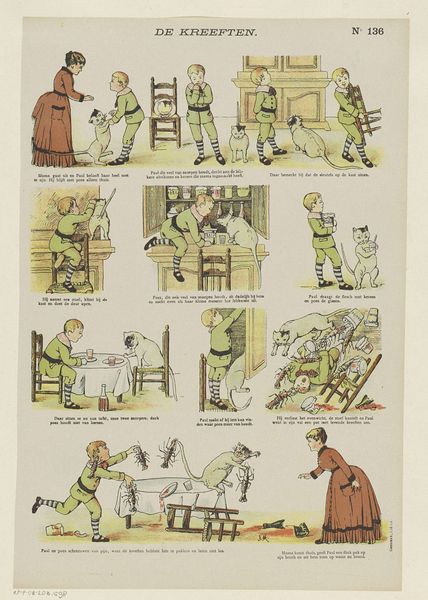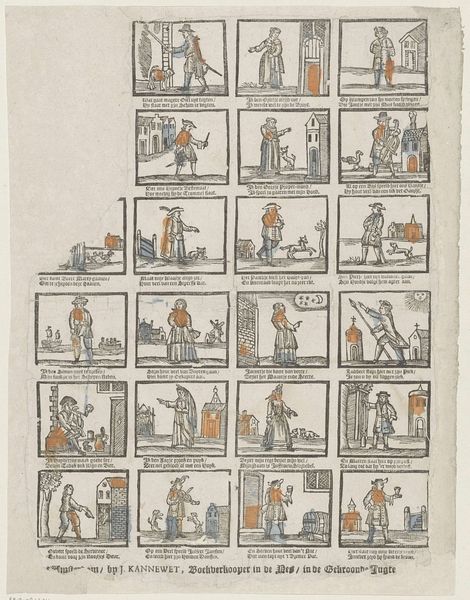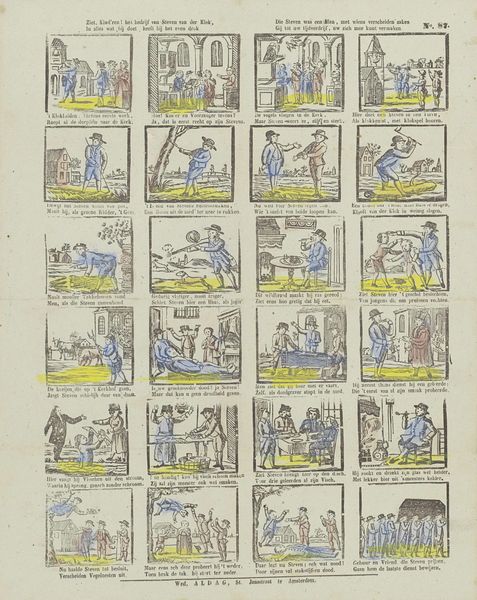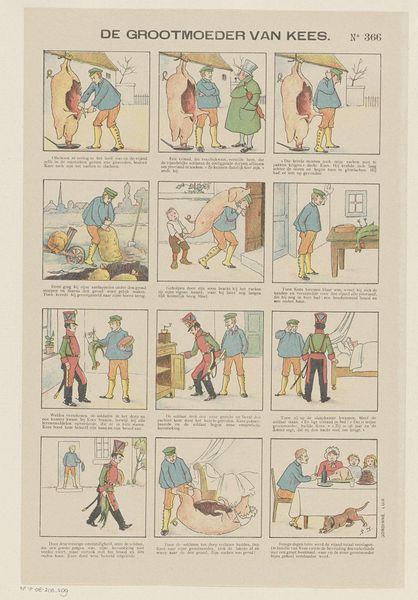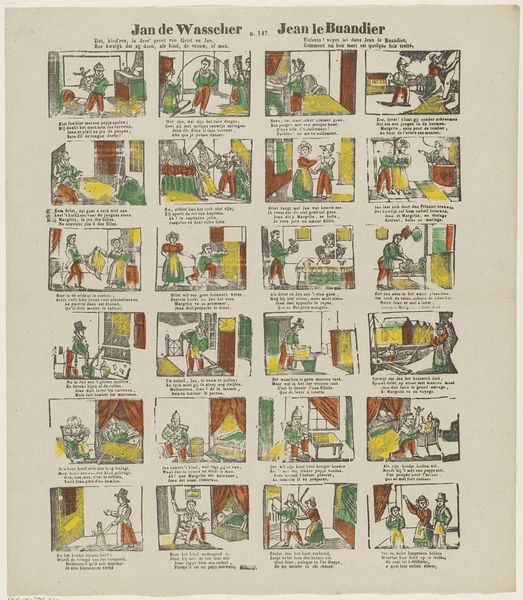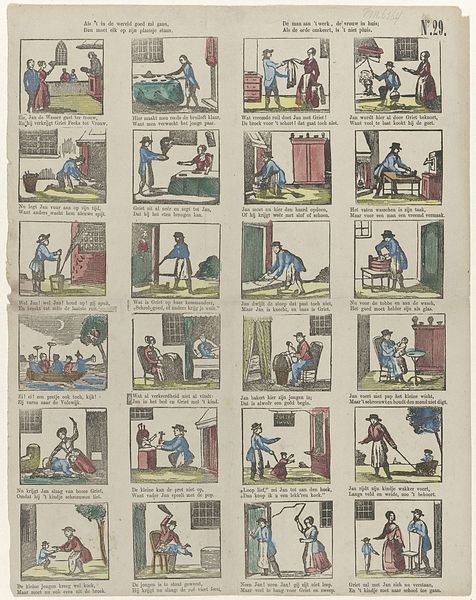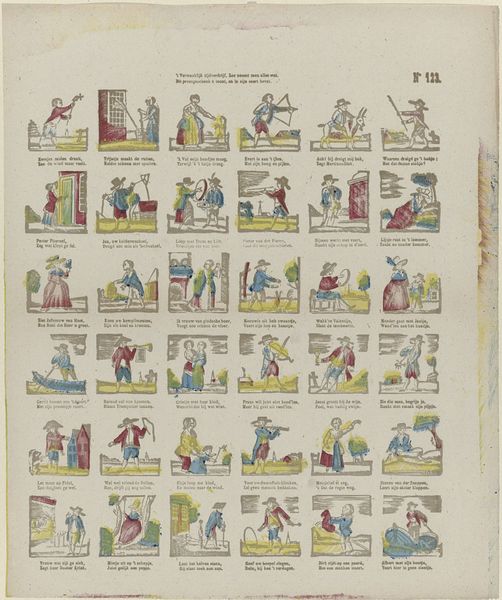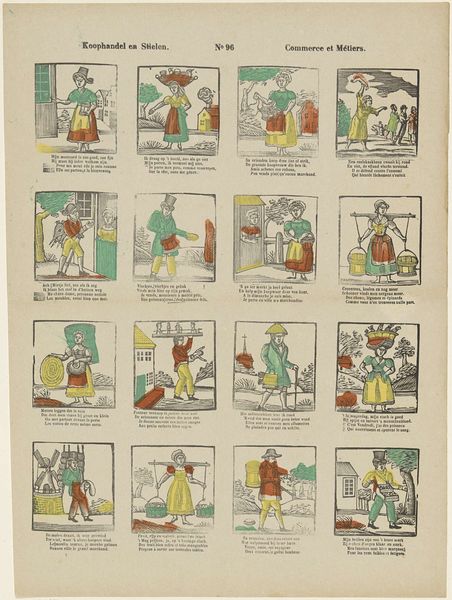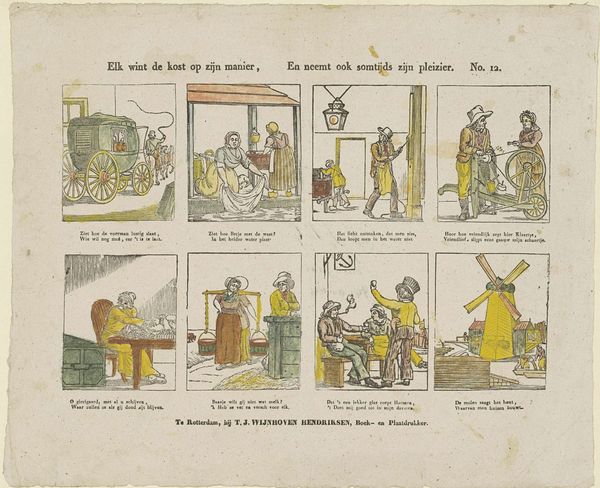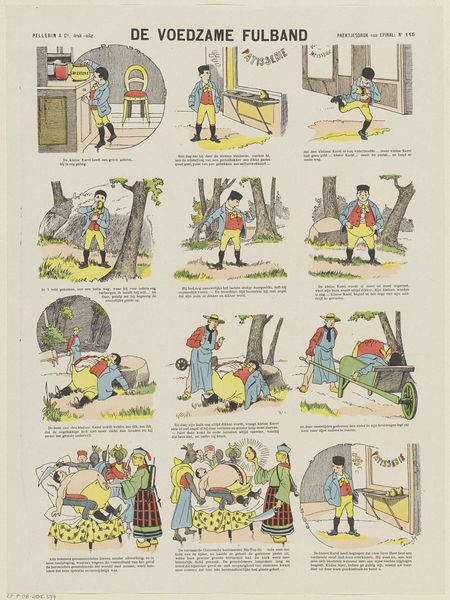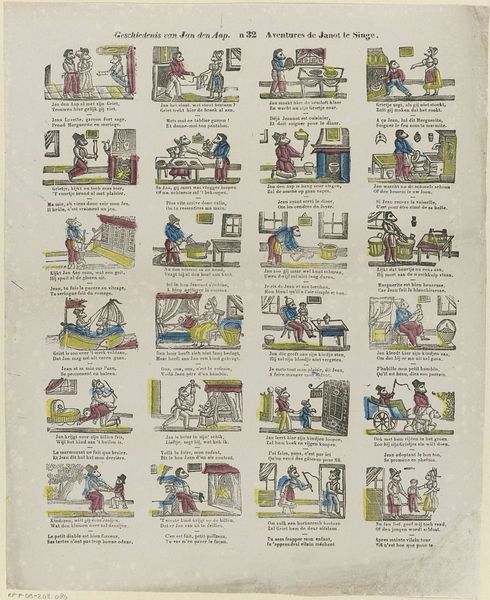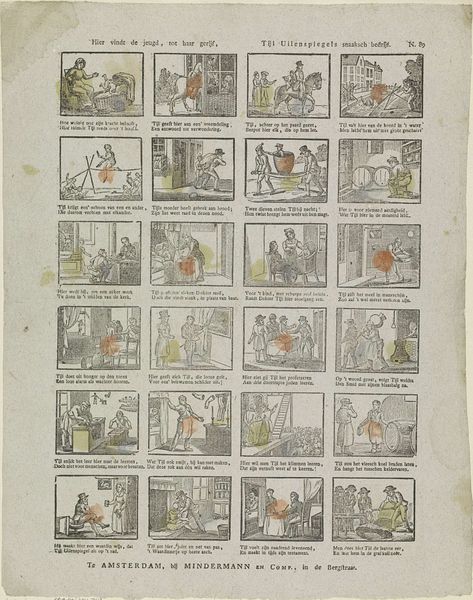
drawing, watercolor, pen
#
drawing
#
comic strip sketch
#
aged paper
#
narrative-art
#
sketch book
#
traditional media
#
figuration
#
personal sketchbook
#
watercolor
#
comic
#
sketchbook drawing
#
pen
#
watercolour illustration
#
storyboard and sketchbook work
#
cartoon carciture
#
sketchbook art
Dimensions: height 399 mm, width 270 mm
Copyright: Rijks Museum: Open Domain
Editor: So, this is Jules Maurel’s “Pierrot en de flesch,” created sometime between 1894 and 1959. It looks like pen, watercolor, and drawing on aged paper – a comic strip, almost. It feels rather old-fashioned. What do you make of it? Curator: Old-fashioned maybe, but consider the social commentary embedded in the very materials and its production. The accessibility of pen and watercolor – readily available, inexpensive – points to a potential critique of elitist art forms, doesn't it? Mass production also factors in. Editor: I hadn’t considered it that way. So you are suggesting Maurel deliberately used common materials as some form of social critique? Curator: Precisely! Think about it. The 'cheap' materials challenge traditional high/low art boundaries. This "sketchbook art", potentially part of a personal sketchbook, speaks to a rejection of formal art making. We have the handmade quality against the printed comic strip too, indicating different kinds of labor and value attached. Where did these drawings circulate and who saw them? How does that impact our reading of its meaning? Editor: It’s like he’s democratizing art itself, by embracing the disposable! How does that lens alter our perception of Pierrot's story in the comic strip? Curator: It changes everything! We start looking at it, not just as a funny narrative of intoxication, but as a deliberate comment on consumer culture. The proliferation of imagery. The access to cheap thrills... Editor: Right, I see. Thinking about it from a materialist perspective really exposes how the message is tied to its creation. Thank you! Curator: Exactly! Always consider production and reception and you’ll find layers of meaning previously hidden!
Comments
No comments
Be the first to comment and join the conversation on the ultimate creative platform.
